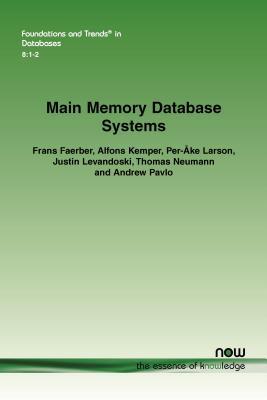With growing memory sizes and memory prices dropping by a factor of 10 every 5 years, data having a "primary home" in memory is now a reality. Main-memory databases eschew many of the traditional architectural pillars of relational database systems that optimized for disk-resident data. The result of these memory-optimized designs are systems that feature several innovative approaches to fundamental issues (e.g., concurrency control, query processing) that achieve orders of magnitude performance improvements over traditional designs.
This monograph provides an overview of recent developments in main-memory database systems. It covers five main issues and architectural choices that need to be made when building a high performance main-memory optimized database: data organization and storage, indexing, concurrency control, durability and recovery techniques, and query processing and compilation. The monograph focuses on four commercial and research systems: H-Store/VoltDB, Hekaton, HyPer, and SAPHANA. These systems are diverse in their design choices and form a representative sample of the state of the art in main-memory database systems. It also covers other commercial and academic systems, along with current and future research trends.
